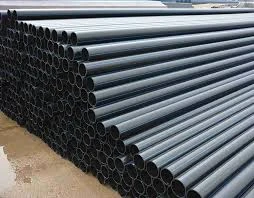ធ្នូ . 15, 2024 19:31 Back to list
PVC Pipe and Sprinkler Fittings for Efficient Irrigation Systems
PVC Pipe Sprinkler Fittings A Comprehensive Guide
PVC (Polyvinyl Chloride) pipe fittings have become a staple in irrigation systems, especially for agricultural and residential purposes. One of their most efficient applications is in sprinkler systems, which require reliable and durable components to ensure optimal water distribution. In this article, we’ll explore the various aspects of PVC pipe sprinkler fittings, including their benefits, types, installation tips, and maintenance practices.
Benefits of PVC Pipe Sprinkler Fittings
1. Durability and Longevity PVC is resistant to corrosion, chemicals, and various environmental factors. This makes PVC pipe fittings an excellent choice for sprinkler systems that need to withstand different weather conditions and soil interactions.
2. Lightweight and Easy to Handle Compared to metal fittings, PVC is much lighter, which simplifies transportation and installation. This attribute also makes it easier for DIY enthusiasts to manage their sprinkler projects without needing heavy machinery.
3. Cost-Effectiveness PVC is generally less expensive than alternative materials such as metal or rubber. Its affordability allows homeowners and farmers to set up comprehensive irrigation systems on a budget.
4. Low Maintenance Once installed, PVC fittings require minimal maintenance. Their resistance to rust and corrosion means that they do not need regular upkeep, making them a convenient choice for both large-scale and small-scale irrigation projects.
Types of PVC Pipe Sprinkler Fittings
Several types of PVC fittings are commonly used in sprinkler installations
1. Elbows Used to change the direction of the pipe, elbow fittings can come in various angles, with 90-degree elbows being the most common.
2. Tees Tee fittings allow for branching off the main line. They are essential for directing water to multiple sprinkler heads from a single pipe.
3. Caps and Plugs These fittings are used to close the end of a PVC pipe. Caps cover the external end, while plugs are inserted into the pipe itself.
4. Adapters PVC adapters allow you to connect pipes of different materials, such as PVC to metal. This is particularly useful in existing systems that may incorporate mixed materials.
5. Couplings Couplings are used to connect two lengths of pipe, ensuring a continuous flow without leaks.
pvc pipe sprinkler fittings

6. Sprinkler Heads Although not a fitting in the traditional sense, the choice of sprinkler head is crucial as it determines the distribution pattern and water flow. Options include fixed, rotating, and adjustable heads.
Installation Tips
To ensure an effective sprinkler system, adhere to these installation tips
1. Plan Your Layout Before installation, sketch a layout of your sprinkler system. Consider the area to be watered, plant types, and possible water pressure limitations.
2. Cut Pipe to Size Measure and cut the PVC pipes to the needed lengths. Ensure the cuts are straight for better connections.
3. Use Primer and Cement To secure the fittings, apply PVC primer to the pipe ends and inside the fittings. Then, use PVC cement quickly after to bond them together.
4. Check for Leaks Once your system is in place, run water through it and inspect for leaks. Tighten connections or replace fittings as necessary.
Maintenance Practices
1. Seasonal Inspections Regularly inspect the sprinkler system at the beginning of each season. Look for signs of wear, cracks, or loose fittings.
2. Clearing Debris Make sure that sprinkler heads are free from dirt and grass to ensure proper water flow.
3. Winterization In colder climates, winterize your sprinkler systems by draining pipes and fittings to prevent freezing and cracking.
4. Adjust Sprinkler Heads Fine-tune your sprinkler heads to ensure even coverage. Adjusting the angles can optimize water distribution and minimize waste.
Conclusion
PVC pipe sprinkler fittings are essential components in creating efficient irrigation systems. Their durability, ease of use, and affordability make them a popular choice for both agricultural and domestic applications. By understanding the various types of fittings, installation processes, and maintenance tips, you can ensure that your sprinkler system operates effectively and provides optimal watering for your plants and lawn. Investing time in setup and upkeep will pay off in the form of lush gardens and healthy crops, all while conserving water and resources.
-
Durable Glossy PVC Rigid Sheet | Premium High-Shine Panels
NewsAug.26,2025
-
Durable PP Rigid Sheet: Lightweight, Chemical Resistant Solutions
NewsAug.21,2025
-
PVC Grey Sheet for Extraction: Chemical Resistant & Durable
NewsAug.19,2025
-
Durable PVC Pipe Fittings for Plumbing & Irrigation Needs
NewsAug.18,2025
-
HDPE Steel Belt Reinforced Spiral Corrugated Pipe | High Strength
NewsAug.17,2025
-
HDPE Pipe Fittings: Durable, Leak-Proof Solutions
NewsAug.16,2025

